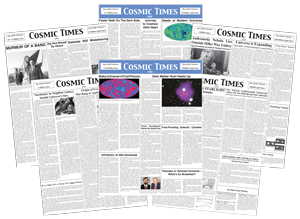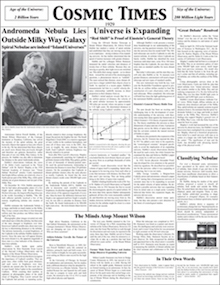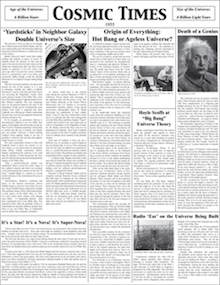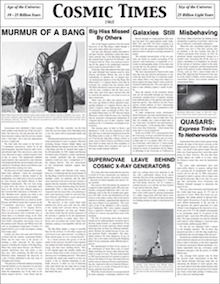Educators' Guide to Cosmic Times
The Cosmic Times newspapers tell the history of our understanding of the changing Universe through student readings tracing the major discoveries in cosmology over the past century. In this educators' guide you will find background information, lesson plans that explore the science and/or historical context, newsletter versions at differentiated reading levels of each newspaper, glossaries, and questions for understanding.
Use the links in the menu to the left, or click a link below, to navigate the educators' guide for the given Cosmic Times year.
Cosmic Times Overview

The Cosmic Times newspapers tell the history of our understanding of the changing Universe through student readings tracing the major discoveries in cosmology over the past century.
This page give a few overview lessons that are either designed as an introduction to the Cosmic Times or that can be used with any single Cosmic Times issue.
1919

A solar eclipse confirms that Einstein's theory of gravity, not Newton's, correctly predicts the bending of starlight.
1929

Hubble builds on his earlier discovery that the Milky Way Galaxy is but one of many galaxies in our Universe to find that the Universe is expanding.
1955

The debate rages between whether the Big Bang and Steady State correctly describes the origin of the universe.
1965

Penzias and Wilson discover the Cosmic Microwave Background, the remnant radiation from the very early Universe, which makes the Big Bang the lead theory for the origin of the Universe.
1993

The COBE mission measures fluctuations in the Cosmic Microwave Background, which explain where structure in our Universe comes from and confirming the role of inflation in the early universe.
2006

The supernova distance scale leads to the discovery of dark energy, a puzzling new component of our Universe that had been undetected until 1997, and its the nature remains a mystery in 2006.



